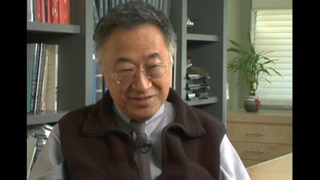Interviews
Dancing in Japan as an American, in the US as Japanese
I had to go to school early in the morning just like to school and I have to learn shamisen, tsuzumi, and dancing and acting and make-up. We have to learn everything there. Then I got the flower arrangement and…I got all the diplomas. I brought back all the diplomas with me. But…well when I was learning, if they don’t like me, they always tell me, “Go back to America.” And then when we were on the stage, and we were in a group, if somebody makes a mistake, they call, “Hey, Amerika-san, Amerika-san!” “You come forward!” “Maeni kinasai, Maeni kinasai.” And that’s not me. It’s somebody else. But every time when something goes wrong, it’s “Amerika-san.” So my name was “Amerika-san.” So when I was in Japan, I was American. Could you imagine that? And so the girl that always make a mistake, she goes like this, “Thank you. Thank you.” They all love me because I take their blame and I don’t say it was her. So I went along fine in Japan.
I*: Even though you say “fine in Japan,” that must be inside very hard.
Yes. It was very hard. But you have to know how to get along. And then when I got the title Fujima Kansuma, I became a oshisho-san. That means oshisho-san. So when I came back to America, I was oshisho-san, so I’m Japanese. So I’m a Japanese here in America, but in Japan, I was “Amerika-san”. So you call me Japanese American.
*"I" indicates an interviewer (Nancy Araki).
Date: November 30, 2004
Location: California, US
Interviewer: Nancy Araki and John Esaki
Contributed by: Watase Media Arts Center, Japanese American National Museum
Explore More Videos

Lack of political power led to camps
(1924-2018) Researcher, Activist

Results of being more American than Japanese
(1924-2018) Researcher, Activist

Trying to convey the meaning of the songs
(b. 1981) Enka Singer

Internship on a Native American reservation in Arizona
(b.1952) Master drummer, artistic director of the Taiko Center of the Pacific


Different tension between East Coast and Los Angeles
Japanese American Creative designer living in Japan

Differences between American and Japanese taiko
(b.1943) Shin-issei grand master of taiko; founded San Francisco Taiko Dojo in 1968.

Meeting Japanese Americans from the mainland in MIS
(1923-2011) Lawyer, MIS veteran, founder of Francis and Sarah Sogi Foundation


His experiences in Chicago after WWII
(b.1929) Pioneer medical researcher in tissue transfer and organ transplantation.

Sudden acceptance in Japanese society
(b. 1967) Hawai`i-born professional fighter in Japan

Ring name: "Yamato Damashi"
(b. 1967) Hawai`i-born professional fighter in Japan


Citizenship and identity
(b. 1967) Hawai`i-born professional fighter in Japan

